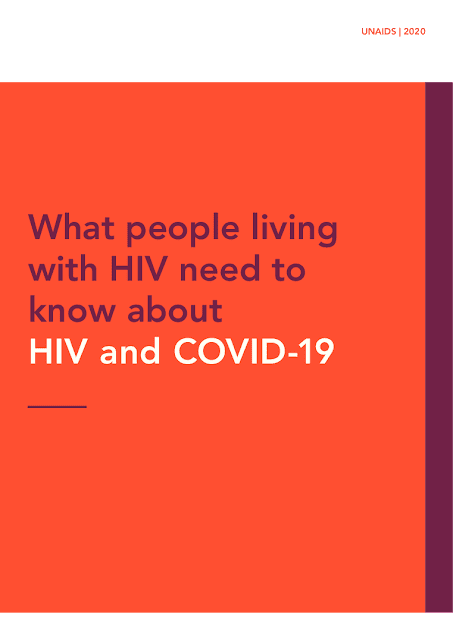Although many jurisdictions in the United States and other countries think it is time to wind down prevention,. the prevalence of Corona virus is endemic in many communities. Yes, that means the virus is still present, even though acute infections are diminishing. There is a worldwide pool of virus particles.
Although anatomically they appear very similar their pathophysiology is very different. HIV attacks lymphocytes known as CD T cells. Coronavirus attacks pulmonary tissues as well as other organs. It is not yet as well known the specific pathophysiology of Covid-19. Much more will be forthcoming in the next 6-12 months.
In Nigeria, as reported in a Feature by Paul Adepoju, the threat of SARS-CoV-2 is already having an effect on HIV and tuberculosis responses as patients choose to social distance by not going to health-care centers to collect drugs. Patients with tuberculosis in Ibadan have been reluctant to travel to collect drugs owing to the overlapping symptoms of tuberculosis and COVID-19. Indeed, clinical diagnosis of COVID-19 will be complicated by the high prevalence of tuberculosis, Pneumocystis pneumonia, and cryptococcosis associated with high burdens of HIV—all of which may have respiratory or imaging characteristics that overlap with the new disease. For care providers in the region, this will be a challenge not yet experienced in other settings.
The responses to COVID-19 in low-resource, high HIV burden settings will necessarily be different from those in the high-resource settings largely affected so far; but a history of adapting to diverse and shifting HIV epidemics in adverse conditions should enable creative solutions to SARs-CoV-2 across sub-Saharan Africa. As James Hargreaves and colleagues point out in their Comment, despite the differences between the viruses, the HIV response has lessons for the COVID-19 response.
One pandemic virus has been a major topic in global health for almost 40 years, the other was discovered just 4 months ago, but, as SARS-CoV-2 infections have now been reported in most African countries, HIV and COVID-19 are on a collision course. Although we have learned a remarkable amount about SARS-CoV-2 in a short time, its potential impact on people living with HIV and on health systems in settings with high HIV burdens is becoming a major concern.
Organizations including UNAIDS, UNICEF, and the International AIDS Society have begun to issue guidance and advice on how to deal with COVID-19 in high HIV burden settings. The Global Fund to Fight HIV, Tuberculosis and Malaria have also urged recipients to divert surplus funds to prepare and respond to COVID-19. We do know, however, that the response to SARS-CoV-2 is compromising HIV programs. As global travel and transport are disrupted, drug supply chains are jeopardized. In a Comment, Weiming Tang and colleagues highlight the contributions of non-governmental organisations stepping in to ensure consistency in HIV care during the SARS-CoV-2 pandemic.
At the time of writing, sub-Saharan Africa has reported relatively few cases: several thousand in South Africa and just tens or hundreds in other countries. However, these numbers are probably substantial underestimates owing to limited testing capacity. A unifying factor of the countries that have managed to suppress SARS-CoV-2 outbreaks rapidly is large-scale testing and contact tracing. Where those facilities are not possible, sentinel testing to identify the worst affected areas might be one solution to make the most of limited resources.
South Africa acted rapidly by imposing a lockdown, banning the sale of alcohol, and taking homeless people into facilities where they could be observed and where substance-use issues among the homeless can be managed. But social distancing is not always possible; many people in high HIV burden settings live in densely populated, cramped housing with limited access to sanitation. To help reduce transmission, Kenya has banned public gatherings, made the wearing of masks mandatory in public, imposed curfews, and set up isolation and quarantine centers for people who test positive for SARS-CoV-2 and their contacts, respectively.
Multimonth dispensing of antiretrovirals has been a topic of interest in recent years: in Kenya, South Africa, and elsewhere, provision of 3 months or even 6-month supplies of antiretrovirals at one time as a response to COVID-19 is becoming the norm to reduce clinical contacts and to facilitate social distancing.
When pandemics collide - The Lancet HIV:




No comments:
Post a Comment